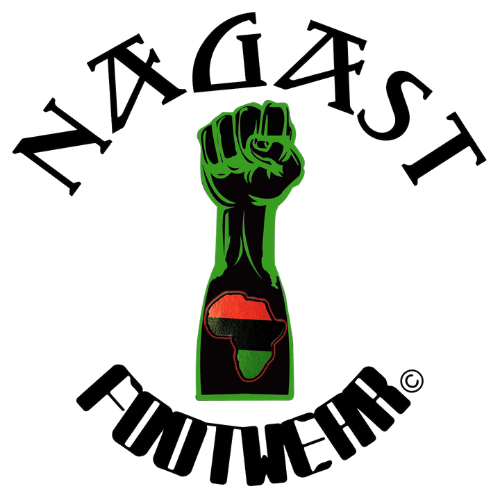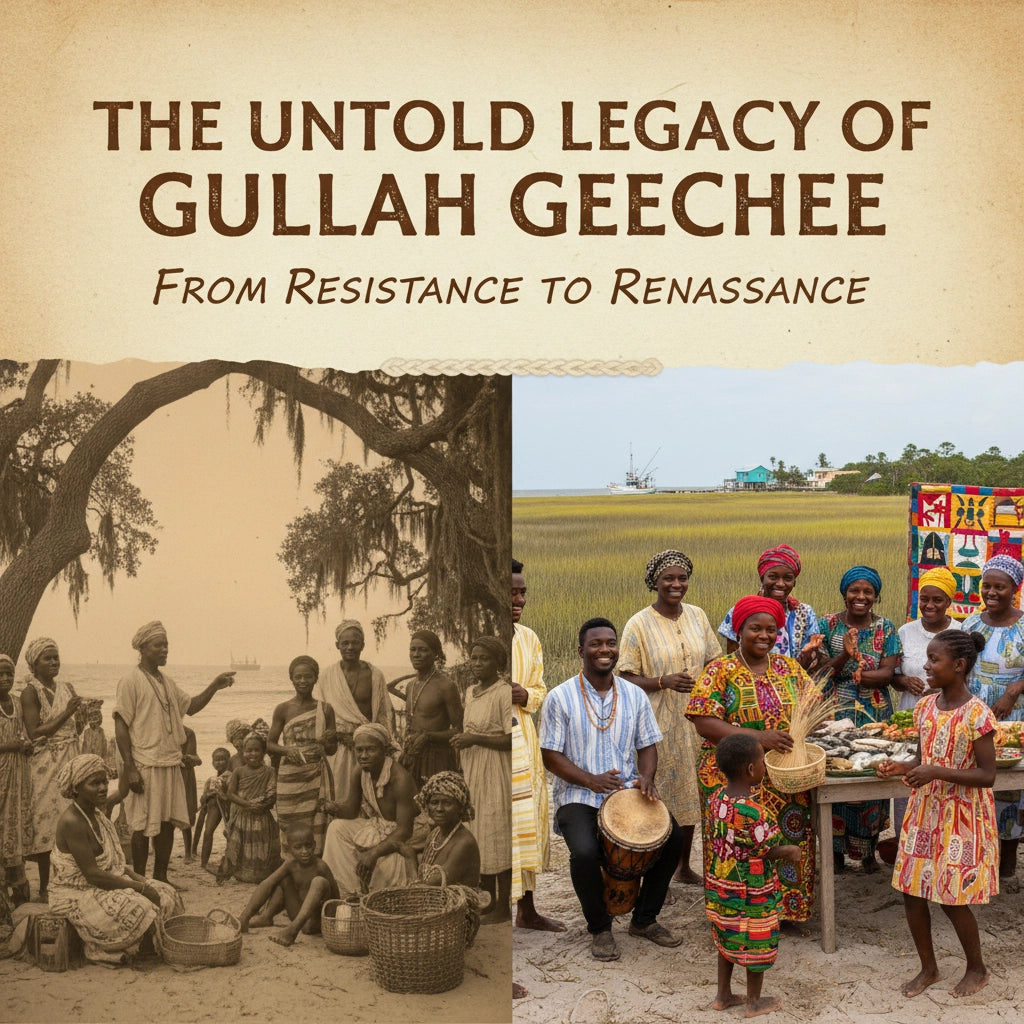
The Untold Legacy of Gullah Geechee: From Resistance to Renaissance
Share
When you think about cultural survival and resistance in America, the Gullah Geechee people deserve to be at the top of that conversation. These are our ancestors who didn't just survive: they thrived, preserved, and created something entirely unique that still influences Black culture today. From the Sea Islands of the Carolinas to the coast of Florida, the Gullah Geechee story is one of the most powerful examples of how our people maintained African traditions while building something new in America.
Roots Run Deep: Where It All Started
The Gullah Geechee people descended from enslaved Africans brought to work the rice, indigo, and cotton plantations along the Southeast coast from the 1600s through the 1800s. But here's what makes their story different: many came specifically from West Africa's rice-growing regions, bringing agricultural knowledge that white plantation owners desperately needed but would never acknowledge.
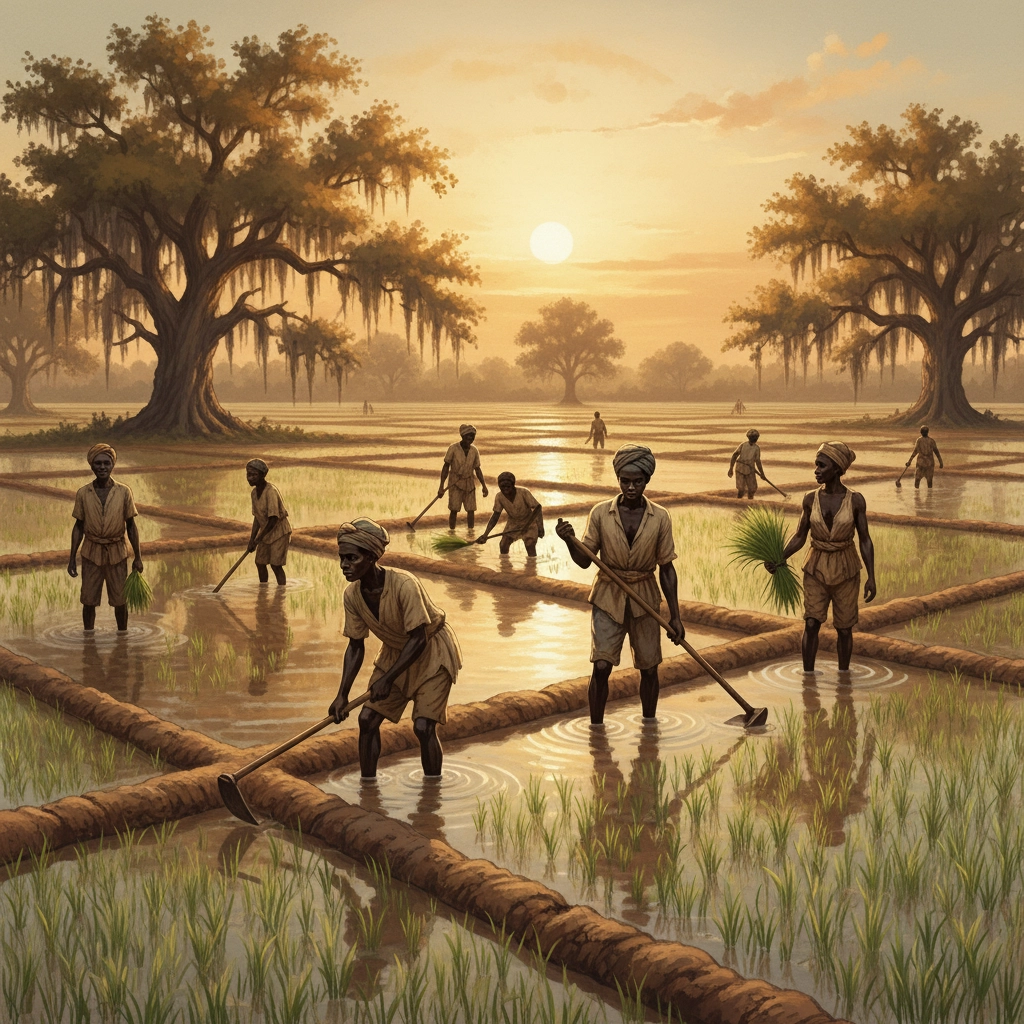
The geographic isolation of the Sea Islands created something unexpected: space for African culture to survive. While enslaved people in other regions faced constant pressure to assimilate, the Gullah Geechee lived in relative isolation on these barrier islands. Plantation owners often left overseers in charge and stayed on the mainland, creating conditions where African traditions could be reinforced by new arrivals from the same regions of Africa.
The Middle Passage and Early Resistance
Let's be real about what our ancestors faced. The Middle Passage was designed to break people: overcrowded ships, chains, disease, starvation, and psychological torture. Ships were so horrific they could be smelled from miles away as they approached port. But the Gullah Geechee survived this journey and immediately began acts of resistance that would define their culture.
Once they arrived, enslavers tried everything to strip away their identity: forcing Christian names, forbidding African languages, and punishing any display of African customs. Fear was a constant companion. But instead of breaking, the Gullah Geechee did something revolutionary: they created their own language and kept their traditions alive underground.
Engineering Excellence: More Than Just Labor
Recent archaeological discoveries have blown up the myth that enslaved people were just unskilled labor. In 2024, underwater sonar mapping found 45 previously unknown irrigation devices across 2,000 acres in North Carolina: sophisticated engineering systems the Gullah Geechee designed for rice cultivation. These weren't simple tools; they were complex water management systems that required advanced engineering knowledge.
This discovery proves what we've always known: our ancestors were master engineers, agriculturalists, and innovators whose expertise built the economic foundation of the South, even while they remained enslaved and unrecognized.
Civil War: From Survival to Active Liberation
The Civil War marked a turning point. When Union forces arrived at the Sea Islands in 1861, they found the Gullah Geechee people ready: not just for freedom, but to fight for it. Many served with distinction in the 1st South Carolina Colored Infantry Regiment, making the Sea Islands the first place in the South where enslaved people were freed.
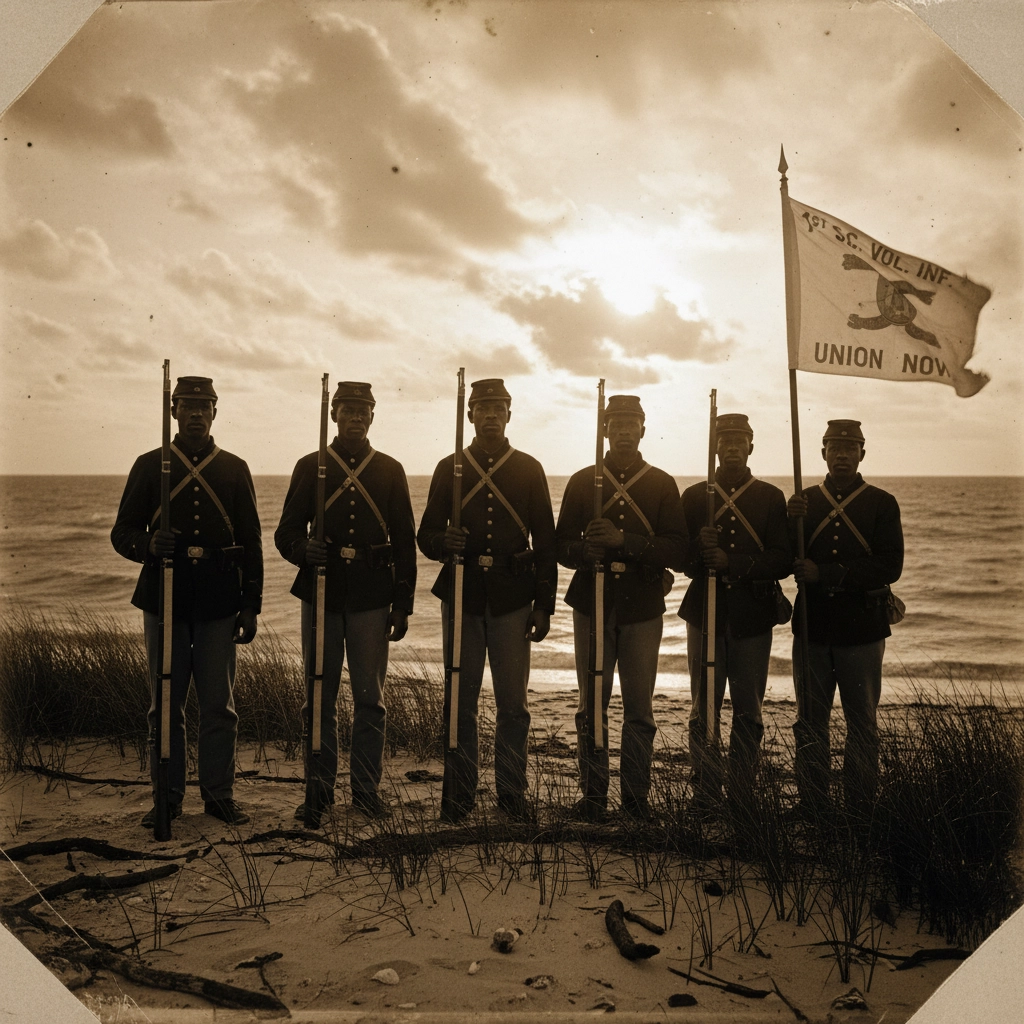
This wasn't passive resistance anymore. This was active participation in destroying the system that had oppressed them. The Gullah Geechee went from surviving slavery to helping end it.
Post-War Isolation Becomes Cultural Strength
After the Civil War, something interesting happened. White plantation owners gradually abandoned rice plantations due to labor issues and hurricane damage. The Gullah Geechee found themselves in remote rural areas of the Lowcountry, which most white people considered undesirable: hot, humid, marshy, and disease-ridden.
But this isolation became their strength. Left alone on these sea islands, they continued practicing their traditional culture with little outside interference well into the 20th century. They bought land, raised families, and built communities that maintained direct connections to Africa.
The Language That Wouldn't Die
Gullah Geechee is the only distinctly African creole language in the United States, and it's still spoken today. It developed as a communication bridge between people who spoke many different African languages, plus European slave traders and owners. The vocabulary and grammar come from both African and European languages, creating something entirely new.
This language represents one of the most successful forms of cultural resistance in American history. Despite centuries of pressure to abandon it, Gullah Geechee survived and continues to influence Southern vocabulary and speech patterns today.
Cultural Renaissance: Arts, Music, and Food
The Gullah Geechee cultural renaissance is happening right now. Their arts and crafts: cast nets, sweetgrass baskets, textiles: evolved from daily necessities but have become celebrated art forms. Their music, rooted in African traditions, influenced spirituals, gospel, ragtime, blues, soul, hip-hop, and jazz. Basically, they helped create the soundtrack of Black America.
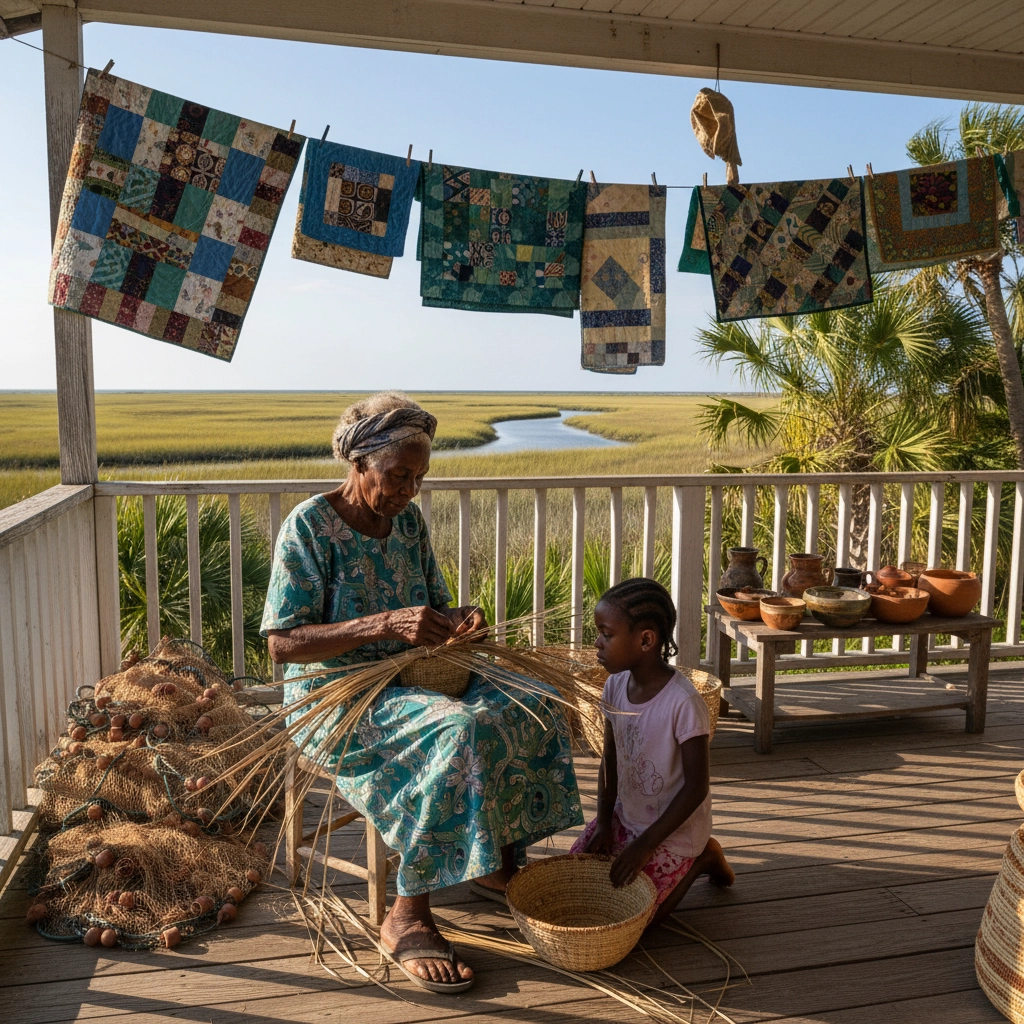
Their foodways: rice dishes, seafood preparations, vegetable cultivation techniques: remain central to Lowcountry cuisine and continue influencing Southern cooking. Red rice, okra, and countless other staples trace back to Gullah Geechee kitchens.
Official Recognition and the Fight Continues
In 2006, Congress established the Gullah-Geechee Cultural Heritage Corridor, recognizing 79 barrier islands and mainland communities from North Carolina to Florida. This federal designation, managed by the National Park Service, officially acknowledged what we've always known: this culture deserves protection and celebration.
But recognition doesn't solve everything. Today's Gullah Geechee communities face new challenges:
• Land rights battles: Generational land ownership is threatened by development and gentrification • Cultural preservation: Younger generations need resources to learn traditional practices • Economic pressures: Tourism and development can exploit rather than benefit communities • Language maintenance: Gullah Geechee language needs active preservation efforts
Modern Activism and Land Rights
Current Gullah Geechee activists are fighting on multiple fronts. Land rights remain crucial: many families have owned property for generations but lack clear titles, making them vulnerable to land grabs. Organizations like the Gullah Geechee Cultural Heritage Corridor Commission work to protect both the culture and the communities that sustain it.
Climate change poses new threats to these coastal communities, requiring innovative adaptation strategies that respect traditional ways of life while addressing environmental challenges.
Influence on Modern Black Culture
The Gullah Geechee influence on contemporary Black culture runs deeper than most people realize. Their emphasis on community self-reliance, cultural preservation, and connection to African heritage provides a blueprint for Black empowerment movements today. Their success in maintaining cultural identity while engaging with broader American society offers lessons for how we can honor our roots while building our future.
Walking in Their Footsteps
At Nagast Footwear, we understand that every step we take today builds on the ground our ancestors prepared. The Gullah Geechee story reminds us that preserving heritage while moving forward isn't just possible: it's powerful. Their journey from resistance to renaissance shows us how cultural strength becomes economic power, how maintaining identity creates lasting influence.
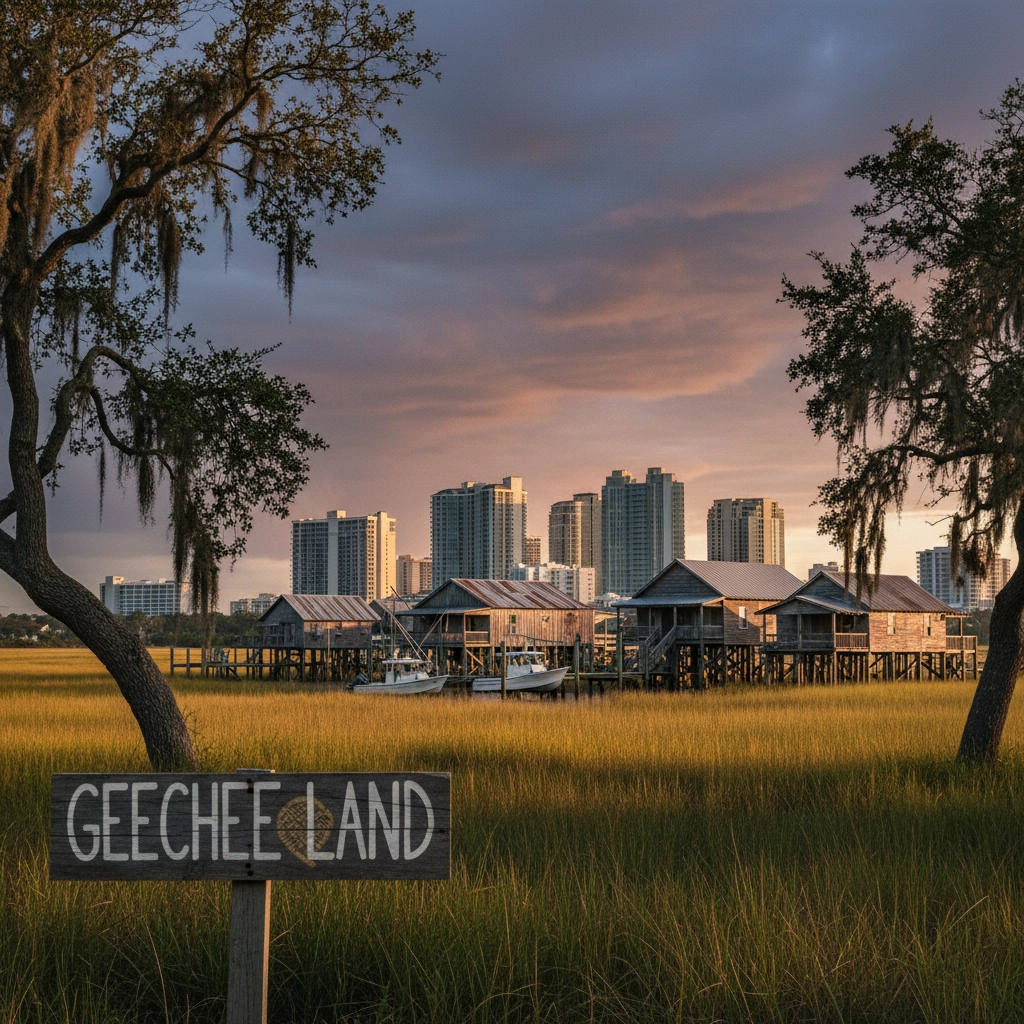
Just like the Gullah Geechee people transformed isolation into innovation, we're transforming the footwear industry by centering stories that have been overlooked, amplifying voices that deserve recognition, and building businesses that honor our heritage while stepping boldly into the future.
The Legacy Lives On
The Gullah Geechee story isn't just history: it's a living example of how resistance becomes renaissance, how cultural preservation becomes cultural influence, and how a people can maintain their identity while contributing to the broader American narrative. Their legacy stands as proof that resilience works, that cultural memory matters, and that our contributions to American civilization are ongoing and vital.
Ready to learn more and support Gullah Geechee heritage? Start by visiting Gullah Geechee cultural sites, supporting community-owned businesses, and learning about current preservation efforts. Connect with organizations working to protect land rights and cultural traditions. And remember: every time we choose to support Black-owned businesses like Nagast Footwear, we're continuing the tradition of economic self-determination that the Gullah Geechee people have practiced for generations.
The path forward is already laid out. We just need to follow their footsteps.
